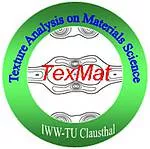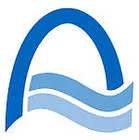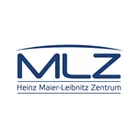Texture School @ FRM II

Texture Analysis in Material Science
15.-17. Oktober 2013 in Garching
Veranstalter ist das Institut für Werkstoffkunde und Werkstofftechnik der Technischen Universität Clausthal unter Leitung von Prof. Dr. Heinz-Günther Brokmeier.
15. Oktober: From Area Detector pictures to Pole Figures
| Zeit | Programmpunkt | ||
| 09:00 - 09:10 | Welcome address | ||
| 09:10 - 09:50 | Lecture: Introduction in crystallographic textures | ||
| 09:50 - 10:20 | Lecture: Pole figure measurement using area detectors | ||
| 10:20 - 10:50 | Lecture: Principle ways of data treatment (individualpeak, Rietveld refinement) | ||
| 10:50 - 11:10 | Coffee break | ||
| 11:10 - 11:40 | Introduction in pole figure extraction by STECA - Software | ||
| 11:40 - 12:40 | Practical: STECA | ||
| 12:40 - 14:00 | Lunch break | ||
| 14:00 - 14:30 | Introduction in pole figure extraction by SABO | ||
| 14:30 - 15:30 | Practical: SABO | ||
| 15:30 - 16:30 | Coffee break | ||
| 16:30 - 17:00 | Introduction in MAUD (Materials Analysis Using Diffraction) | ||
| 17:00 - 18:00 | Practical: MAUD |
16. Oktober: Interpretation of Pole Figures
| Zeit | Programmpunkt | ||
| 9:00 - 9:45 | Lecture: Definition ofthe pole figure (type of projection, pole figure window, pole figure statistics, number of pole figures,normalisation, RP-values ...) | ||
| 09:45 - 10:15 | Lecture: Basic information’sof pole figures | ||
| 10:15 - 10:45 | Coffee break | ||
| 10:45 – 12:45 | Practical:Pole figure extractionfor a later interpretation-STECA, SABO or MAUD | ||
| 12:45 - 14:00 | Lunchbreak | ||
| 14:00 - 15:00 | Practical: Interpretation of pole figure symmetry and its meaningExample 1, 2, 3 | ||
| 15:00 - 15:30 | Introduction in Ideal components, fibers and orientation bands | ||
| 15:30 - 16:30 | Practical: Ideal components (hkl) , ideal fiber texture and orientation bands | ||
| 16:30 - 16:45 | Coffee break | ||
| 16:45 - 17:45 | Crystallographic relation between pole figures(cubic, hexagonal) | ||
| 18:30 - ???? | Social evening |
17. Oktober: Interpretation of the Orientation Distribution Function
| Zeit | Programmpunkt | ||
| 09:00 - 09:45 | Lecture: Introduction in the orientation distribution function (ODF) | ||
| 09:45 - 10:00 | Basic informations on how to calculate the ODFs | ||
| 10:00 - 10:30 | Coffee break | ||
| 10:30 - 12:45 | MTEXa MATLAB™ toolbox for quantitative texture analysis | ||
| 12:45 - 14:00 | Lunchbreak | ||
| 14:00 - 14:20 | ODF calculation by the iterative series expansion method | ||
| 14:20 - 15:30 | Practical: ODF calculation by the iterative series expansion method | ||
| 15:30 - 16:00 | Coffee break | ||
| 16:00 - 17:00 | Practical: Interpretation of ODFs (ideal components φ1,φ, Φ2) ideal fiber texture and orientation bands) | ||
| 17:00 | STRESS-SPEC visite |
Partner



